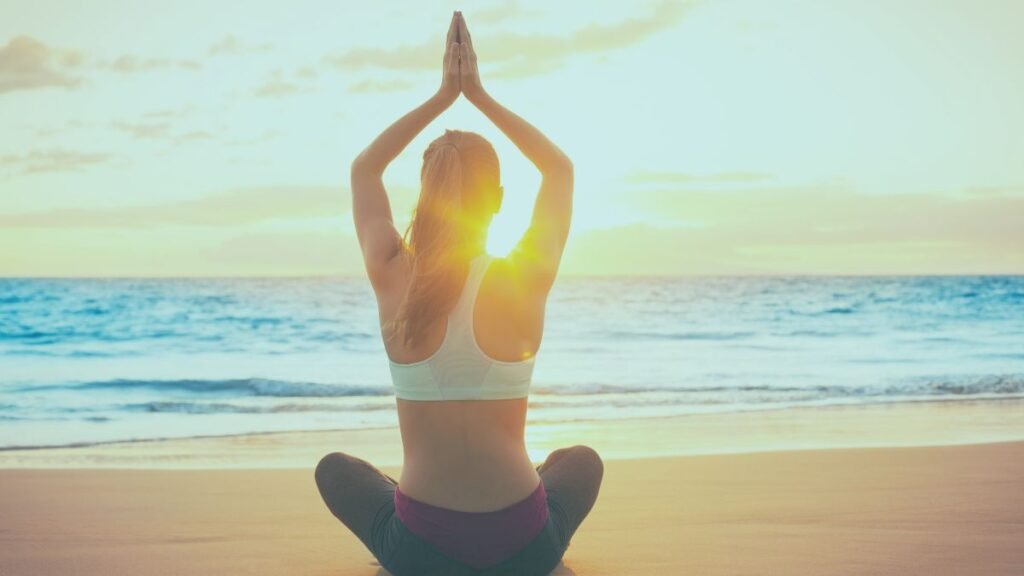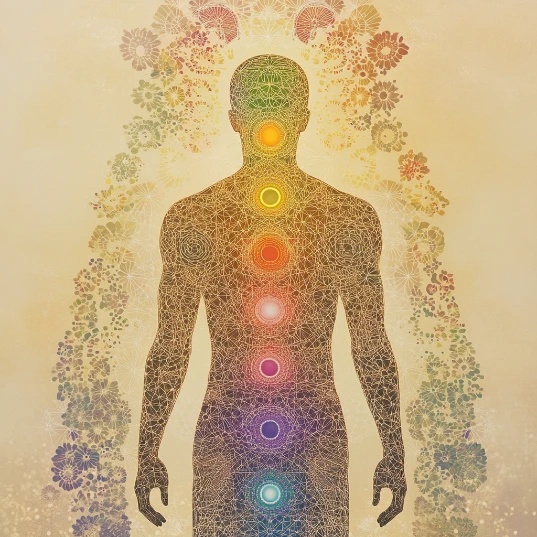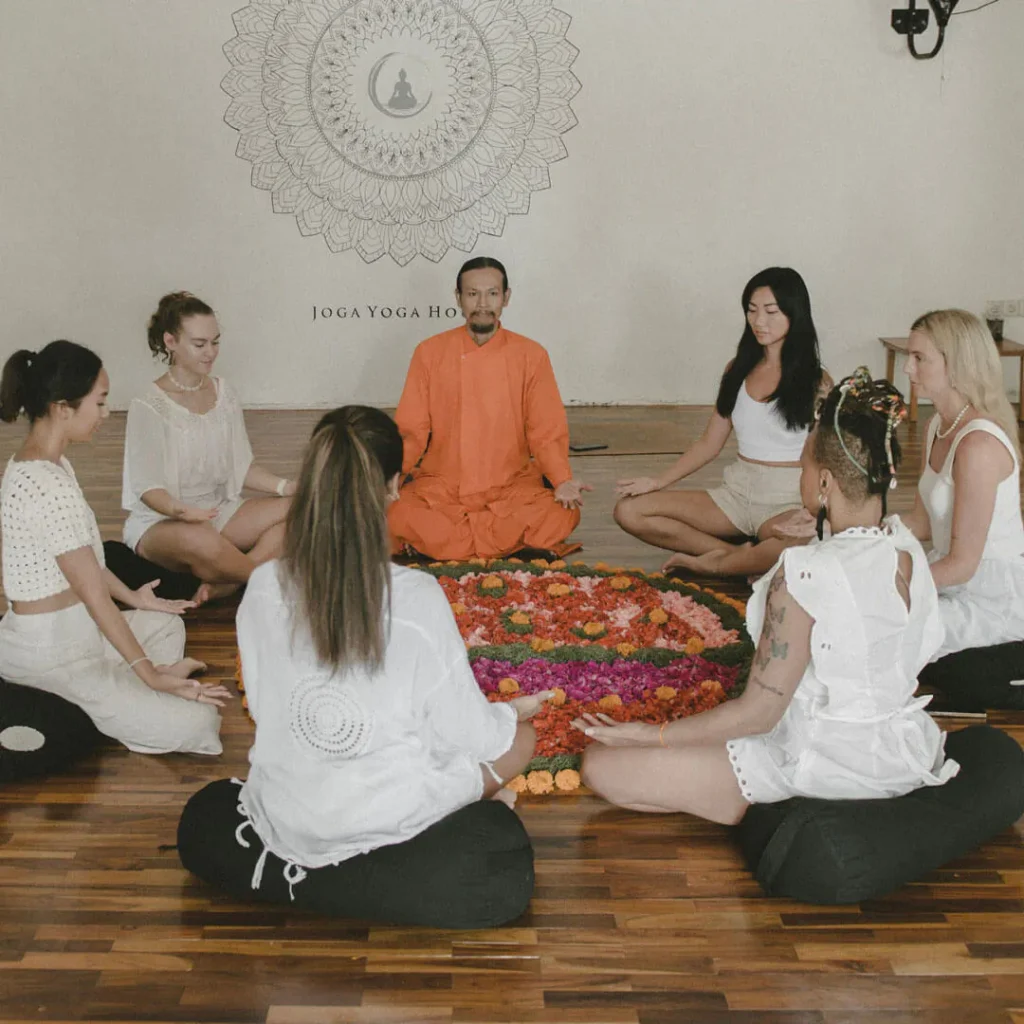The Kundalini snake, also called the Kundalini serpent, is one of the most powerful spiritual symbols in yoga and Hindu philosophy. It represents the dormant energy coiled at the base of the spine, waiting to rise through the chakras. When awakened, this serpent energy can lead to profound transformation, higher states of awareness, and spiritual enlightenment. Understanding the meaning of the Kundalini snake helps us connect with both the mystical symbolism and the actual yogic practices that guide its awakening.
What is Kundalini Snake Energy?
Kundalini energy comes from the Sanskrit word kundal, meaning “coiled” or “spiral.” It is often described as a dormant serpent lying at the base of the spine in the Muladhara, or Root Chakra. This energy is also called kundalini shakti, the divine feminine force, seen as the partner of Shiva, the god of pure consciousness.
The Kundalini snake meaning goes beyond simple energy. It represents spiritual potential, transformation, and the journey of self-realization. When the serpent energy awakens, it rises through the chakras along the spine, unblocking energy centers and leading toward the crown chakra. Many describe this process as a rebirth, where the shedding of the snake’s skin mirrors the shedding of ego and ignorance.

The Kundalini Serpent Theory and Symbolism
In yogic texts, the Kundalini serpent is said to coil three and a half times at the base of the spine, symbolizing untapped power. When awakened through yoga, pranayama, or meditation, the serpent energy begins its upward journey through the central channel (Sushumna Nadi), weaving between Ida and Pingala—the body’s lunar and solar energy pathways.
The serpent is a universal symbol of rebirth and transformation. Just as snakes shed their skin, the awakening of Kundalini serpent energy represents the release of old patterns and the opening to higher consciousness. In meditation, some practitioners even report seeing snake imagery, a sign that their inner energy is beginning to stir.
Stages of Kundalini Snake Awakening Through the Chakras
The awakening of the Kundalini snake is not a single event. It unfolds in stages, each linked to spiritual growth and the release of energy knots, known as granthis. Yogic teachings describe three main stages of Kundalini serpent awakening:
Arambha: The Beginning of Kundalini Snake Energy
This is the first stage, where the dormant serpent energy begins to stir in the Root Chakra. Practitioners may feel warmth, tingling, or spontaneous movements as the Brahma Granthi, the first knot of energy, starts to loosen. Emotionally, this stage often brings heightened sensitivity as the snake energy awakens.
Ghata: Cleansing by the Serpent Energy
In this stage, the rising Kundalini serpent energy clears blockages in the chakras. Old emotional wounds, guilt, and ego-driven patterns may come to the surface. This cleansing process unties the Vishnu Granthi, the second energy knot, allowing deeper healing and opening of the heart. Many practitioners describe this phase as both challenging and liberating.
Awakening: Serpent Rising to the Crown Chakra
The final stage occurs when the Kundalini snake rises to the Sahasrara, or Crown Chakra. Here, the Rudra Granthi is dissolved, representing the release of ego and identity. The practitioner experiences oneness with universal consciousness. This stage is the ultimate goal of Kundalini awakening, where the serpent completes its journey from root to crown.
The Kundalini Snake and Its Role in Yoga and Meditation
The Kundalini snake holds a central place in yoga and meditation. Practices like Kundalini yoga combine postures, breathwork, and chanting to awaken and guide serpent energy through the chakras. Breath practices such as pranayama yoga are especially powerful for stimulating energy flow.
Meditation is another key element. By stilling the mind, practitioners become more aware of subtle movements of energy within the body. Some meditations include mudras (hand gestures) and bandhas (energy locks) to help direct the serpent power upward. These techniques ensure the awakening is safe and balanced.
The importance of Kundalini in yoga is not only physical but also spiritual. As the serpent rises, it symbolizes transformation, greater self-awareness, and connection with the divine.

Risks and Rewards of Kundalini Serpent Awakening
Awakening the Kundalini serpent can be life changing, but it also carries risks if attempted without preparation or guidance. Some practitioners report overwhelming sensations such as heat, pressure in the head, or emotional turbulence. This is sometimes called “Kundalini syndrome.” Without proper support, the energy may feel destabilizing.
However, when approached gradually and with respect, the rewards of Kundalini snake awakening are profound. Practitioners often experience bliss, clarity, spiritual insight, and a deep sense of unity with the universe. The key is to move slowly, listen to the body, and practice under experienced guidance.
Snake Symbolism in Kundalini Energy
The Kundalini snake is more than a metaphor. It carries deep spiritual symbolism that resonates across many cultures. In yoga, the serpent represents hidden potential, wisdom, and the cycle of transformation. Just as a snake sheds its skin, awakening Kundalini serpent energy is about shedding old habits, fears, and limitations to embrace higher awareness.
The snake coiled at the base of the spine is a symbol of dormant energy, waiting to be awakened. As it rises through the chakras, it reflects personal growth and spiritual rebirth. The spiral movement of the serpent also mirrors the spiral pathways of the Ida and Pingala nadis, which weave around the central channel of the spine.
Many practitioners also report seeing snakes in meditation, which is often interpreted as a sign that energy is beginning to move. Different snake colors and forms carry symbolic meaning. For example, a cobra may represent protection and power, while a black snake may symbolize deep cleansing of hidden fears.
Conclusion
The Kundalini snake is one of yoga’s most profound symbols, representing the dormant energy within every person and the possibility of transformation. Its rising through the chakras reflects the path of growth, shedding limitations, and moving toward higher awareness.
For many, learning about the Kundalini serpent is the spark that inspires a deeper yoga journey. The same energy that the snake represents — strength, renewal, and awakening — is what guides students on the mat and beyond.
Awaken Your Inner Potential with Joga Yoga in Bali

The Kundalini snake is a powerful symbol of transformation and rising energy. In the same way, a yoga journey can awaken hidden strength, balance, and clarity within you. At Joga Yoga in Bali, we help students tap into this inner power through immersive teacher training.
Our Yoga Teacher Training in Bali blends traditional yoga philosophy, asana, pranayama, and meditation with Bali’s spiritual culture. Just as the serpent rises through the chakras, your practice will grow step by step, preparing you for a life of teaching and self-discovery.
✨ What you’ll experience at Joga Yoga:
- Daily yoga and meditation to awaken awareness.
- Lessons in philosophy, anatomy, and teaching techniques.
- A supportive community in the heart of Bali.
- An internationally recognized Yoga Alliance certification.
👉 Ready to begin your transformation? Reserve your spot today and join us in Bali to step fully into your light.
Join Joga Yoga’s all-inclusive Yoga Teacher Training retreat—accommodation, meals, and expert guidance, all set in the breathtaking beauty of Bali.
FAQs
What is Kundalini energy?
Kundalini energy is a dormant spiritual force located at the base of the spine, often symbolized as a coiled serpent. When awakened, it rises through the chakras, leading to spiritual enlightenment and higher states of consciousness.
What is the Kundalini Snake?
The Kundalini Snake represents the coiled energy at the base of the spine. In spiritual traditions like Hinduism and yoga, this energy is seen as the driving force behind personal transformation and spiritual awakening.
How do you awaken Kundalini energy?
Kundalini energy can be awakened through spiritual practices such as yoga, meditation, pranayama (breathing exercises), and chanting. These practices help activate and guide the energy through the body’s chakras.
What are the stages of Kundalini awakening?
The three main stages of Kundalini awakening are:
1. Arambha (Beginning): Initial awakening and release of energy.
2. Ghata (Cleansing): Purification of emotional and psychological blockages.
3. Awakening: Merging individual consciousness with universal consciousness, leading to enlightenment.
Is Kundalini awakening dangerous?
Kundalini awakening can be overwhelming if it happens too quickly or without proper guidance. It’s important to practice with awareness and support from experienced teachers to avoid physical and emotional disturbances.






